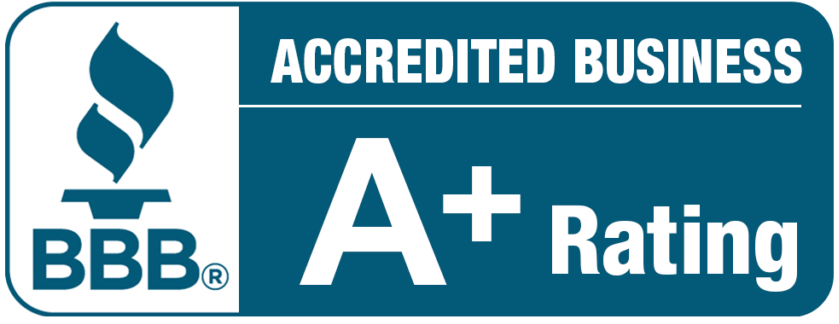Navigating how to buy and sell a house at the same time can feel like walking a tightrope. This complex process requires careful planning, precise timing, and a solid understanding of the real estate market. Whether you’re upgrading to a larger home, downsizing, or relocating, this comprehensive guide will walk you through the strategies, challenges, and solutions to successfully manage both transactions.

Understanding Your Options:
Buy First, Then Sell Advantages:
- No pressure to find temporary housing
- Time to move at your own pace
- Ability to renovate the new home before moving
- No rushed decision-making on your new purchase
Disadvantages:
- Need to qualify for two mortgages
- Higher financial stress
- Risk of paying two mortgages if your existing home doesn’t sell quickly
- Larger cash reserves required
Sell First, Then Buy Advantages:
- Know exactly how much money you have for your new purchase
- Stronger buying position with sellers
- No risk of carrying two mortgages
- Easier to qualify for a new mortgage
Disadvantages:
- Need temporary housing if you can’t find a new home quickly
- Pressure to find a new home quickly
- Potential for multiple moves
- Storage costs for belongings
Simultaneous Close Advantages:
- One moving day
- No temporary housing needed
- No double mortgage payments
- Clean transition from one home to another
Disadvantages:
- Complex coordination required
- Higher risk if one transaction falls through
- Timing challenges with multiple parties involved
- May need contingency plans
Financial Considerations and Solutions
Bridge Loans
A bridge loan can help finance the down payment on your new home using the equity in your current home. This short-term financing option bridges the gap between buying and selling.
Key aspects:
- Usually valid for 6-12 months
- Higher interest rates than traditional mortgages
- Requires good credit and significant home equity
- Can be costly but provides flexibility
Home Equity
Line of Credit (HELOC) Another financing option is using a HELOC on your current home to fund the down payment on your new home.
Benefits:
- Lower interest rates than bridge loans
- Flexible borrowing terms
- Interest-only payment options
- Can be kept open after sale for future use
Sale Contingency
Including a sale contingency in your purchase offer means your new home purchase is contingent on selling your current home.
Considerations:
- Less attractive to sellers in competitive markets
- Provides financial protection
- May need to offer higher price to offset contingency
- Time limits usually apply
Practical Steps for Success
Assess Your Market Position
- Research local market conditions
- Determine if it’s a buyer’s or seller’s market
- Evaluate your home’s current value
- Calculate your equity position
- Review comparable sales in both areas
Prepare Your Current Home
- Complete necessary repairs
- Update key features
- Stage for maximum appeal
- Professional photography
- Deep cleaning and decluttering
Financial Preparation
- Review current mortgage terms
- Calculate potential proceeds from sale
- Determine new home budget
- Get pre-approved for new mortgage
- Build emergency fund for unexpected costs
Assemble Your Team Essential professionals:
- Experienced real estate agent(s)
- Real estate attorney
- Mortgage lender
- Home inspector
- Title company
- Moving company
Working with Real Estate Agents
Single Agent vs. Multiple Agents Consider whether to use:
- One agent for both transactions
- Different agents for buying and selling
- Teams within the same brokerage
Communication Strategy
- Establish clear lines of communication
- Set expectations for updates
- Create timeline for both transactions
- Develop contingency plans
Timing Strategies
Extended Closing
Request an extended closing period on your sale to allow time to find and close on a new home.
Benefits:
- More time to search for new home
- Reduced pressure to move quickly
- Better negotiating position
- Flexibility in timing
Rent-Back Agreement
Negotiate a rent-back agreement with your home’s buyer to stay in your current home after closing.
Advantages:
- Extra time to find new home
- Avoid temporary housing
- Reduced moving stress
- Cash from sale available for purchase
Risk Management
Backup Plans
Develop contingency plans for various scenarios:
- Temporary housing options
- Storage solutions
- Alternative financing
- Backup offers on both transactions
Contract Protections Include protective clauses in contracts:
- Sale contingencies
- Purchase contingencies
- Flexible closing dates
- Clear terms for possession
Technology and Tools
Digital Organization Use technology to stay organized:
- Project management apps
- Document storage solutions
- Communication platforms
- Calendar scheduling tools
Virtual Tours and Research Leverage technology for efficiency:
- Virtual home tours
- Online market research
- Digital mortgage applications
- Remote document signing
Moving and Logistics
Detailed Timeline Create a comprehensive timeline including:
- Inspection dates
- Appraisal scheduling
- Mortgage milestones
- Moving company coordination
- Utility transfers
Moving Strategy Develop an efficient moving plan:
- Sort and declutter early
- Pack non-essential items first
- Label boxes clearly
- Coordinate service providers
- Plan for pets and plants
Successfully buying and selling a house at the same time requires careful planning, strong professional support, and flexible strategies. By understanding your options, preparing financially, and developing comprehensive contingency plans, you can navigate this complex process more smoothly. Remember that market conditions, personal circumstances, and local real estate practices will influence your specific approach. Stay organized, maintain clear communication with all parties involved, and remain flexible as you work through this challenging but achievable real estate milestone.
Additional Tips for Success:
- Start planning early
- Maintain detailed records
- Keep emergency funds accessible
- Stay flexible with timing
- Consider all financing options
- Build strong professional relationships
- Research market conditions thoroughly
- Prepare for unexpected challenges
By following this comprehensive guide and working with experienced professionals, you can successfully manage the complex process of buying and selling a home simultaneously while minimizing stress and maximizing your chances of success.
Frequently Asked Questions How to Buy and Sell a House at the Same Time:
Is it better to buy or sell a house first?
This depends on your specific situation. Selling first provides financial certainty and makes mortgage qualification easier, while buying first offers convenience but may require more financial resources. Consider factors like market conditions, your financial situation, and local real estate trends.
How can I afford a down payment on a new house before selling my current home?
Several options are available:
- Bridge loans
- Home Equity Line of Credit (HELOC)
- Personal savings
- Bridge financing from lenders
- Family loans
- 401(k) loans (though this should be carefully considered)
What happens if my current home doesn’t sell before I need to close on my new home?
You have several options:
- Extend the closing date on your new home purchase
- Consider a bridge loan
- Rent out your current home temporarily
- Adjust your asking price to sell more quickly
- Look into alternative financing options
How long does it typically take to buy and sell simultaneously?
The process typically takes 2-4 months, but can vary significantly based on market conditions, property types, and location. Planning for 3-6 months is usually realistic.
Should I use the same real estate agent for both transactions?
Using the same agent can streamline communication and coordination, but ensure they have experience in both areas if they’re different markets. Some prefer separate agents to ensure focused attention on each transaction.
What happens if my buyer backs out at the last minute?
Your options include:
- Activating backup offers
- Quickly relisting the property
- Negotiating with your new home’s seller for extended timing
- Exploring temporary financing options
- Considering temporary housing if needed
How can I coordinate moving out and moving in on the same day?
- Negotiate a rent-back agreement
- Schedule closings for different times on the same day
- Use a moving company that offers overnight storage
- Have a backup temporary housing plan
- Coordinate closely with both closing agents
What contingencies should I include in my contracts?
Important contingencies to consider:
- Home sale contingency
- Purchase contingency
- Financing contingency
- Inspection contingency
- Appraisal contingency
- Title contingency
How much extra money should I have in reserve?
It’s recommended to have 3-6 months of housing payments plus:
- Moving costs
- Temporary housing if needed
- Emergency repairs
- Bridge loan payments if applicable
- Down payment funds
- Closing costs for both transactions
Can I use the same mortgage lender for both transactions?
Yes, and it often helps streamline the process. However, shop around to ensure you’re getting the best rates and terms for both transactions.
What if my new home appraises for less than the purchase price?
- Renegotiate the purchase price
- Make up the difference in cash
- Request a second appraisal
- Cancel the contract if you have an appraisal contingency
- Look for a different property
How do I handle utilities and services when moving?
- Schedule disconnection/connection dates with flexibility
- Overlap services by 1-2 days when possible
- Keep records of all scheduled changes
- Set up mail forwarding in advance
- Coordinate with both properties’ utility companies
What happens if market conditions change during the process?
- Adjusting pricing strategies
- Modifying timing expectations
- Exploring different financing options
- Reviewing contingency plans
- Consulting with real estate professionals for market updates
How can I reduce stress during this process?
- Planning well in advance
- Having clear contingency plans
- Working with experienced professionals
- Maintaining open communication with all parties
- Building in time buffers for each step
- Having backup plans for housing if needed
- Keeping important documents organized
What are common mistakes to avoid?
- Not having enough cash reserves
- Failing to get pre-approved for financing
- Skipping important contingencies
- Poor timing coordination
- Not having backup plans
- Underestimating moving costs
- Failing to communicate effectively with all parties
How do I handle home inspections for both properties?
- Get your current home pre-inspected before listing
- Schedule new home inspection as soon as offer is accepted
- Address any critical issues quickly
- Keep detailed records of all findings and repairs
- Consider timing of any necessary repairs
Conclusion:
Successfully navigating how to buy and sell a house at the same time requires careful planning, strategic timing, and professional guidance. While the process can be complex, understanding your financial options, working with experienced professionals, and maintaining clear communication throughout can make the transition smoother.
Remember to keep contingency plans in place, stay flexible with timing, and maintain adequate cash reserves for unexpected situations. Whether you choose to buy first, sell first, or coordinate simultaneous closings, success lies in thorough preparation and working with a reliable team of real estate professionals. With proper planning and execution, you can achieve your goal of a successful home transition.



